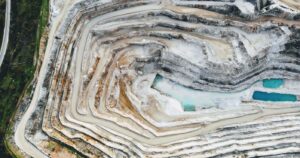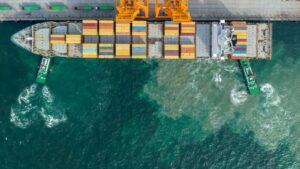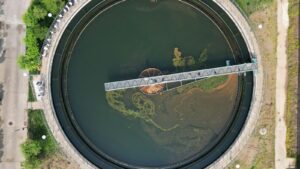Agtech, Insect Farming and the Future of Efficiency: An Interview with Ÿnsect’s Co-Founder
Today, the main goal of insect farming is to develop a product to replace fishmeal as an ingredient in fish feed. Fishmeal currently has a global production of three to four million tons and was worth $6.3 billion in 2017. Eventually, insect farmers want to compete in the pet food ($91 billion) and even animal feed ($400 billion) markets.
Business specifics
Rather than building, owning and operating each insect farm, a licencing model is possible. Insect farming is highly automated and usually carried out in a clean environment, making a company’s value is as much in the process as it is in the product. To build commercial-scale facilities, companies can raise capital or use debt-based financing based on the provision signed supplier and customer contracts that de-risk the investment. Customers are motivated to sign the contract before the production facility is built is to avoid the increasing price volatility of fishmeal.
Competitive landscape
Insect developers compete on the choice of insect. A developer like Ÿnsect uses a beetle. AgriProtein uses Black Soldier Fly (BSF). The beetle may provide a higher protein content and have the advantage that it can’t fly, but it requires a dry feed input whereas the BSF can be fed on organic waste streams. Competition tends to focus on the health and nutrition benefits of the product, but the efficiency of the farming system itself is a differentiator.
The interview

I spoke with Alexis Angot, the Co-Founder of Ÿnsect, at our recent Cleantech Forum Europe in Stockholm. At the Forum, Ÿnsect was awarded the Standout Fundraising Achievement of the Year 2019 for the Europe and Israel region highlighting its recent $125 million investment round to build the world’s biggest insect farm in Europe.
What is the Ÿnsect story?
Alexis Angot (AA): “We were co-founded about eight years ago with a simple idea that insects are part of the food chain of many animals, reptiles, and fish, but when we farm these animals, insects are not used as food. We realized there was an opportunity to develop insect farming to address the protein shortage. As we began developing our plans, we also found that the insects promoted animal health, which we had not foreseen when we started addressing the nutrition and protein shortage.”
So what were the key milestones in developing the product?
AA: “We have an industrial vision. To have impact you need to be big. For that we need lots of money and to build big farms. Our clients buy on a big scale, and so that was a key part of this consideration. So, to have the desired impact and to sell our ingredients to bulk-buyers, fundraising has been key. First, we developed the pilot. A small factory, or a big pilot, however you want to view it. This was not built to be economically viable, but just to demonstrate that our technology worked. Having achieved that, we knew we could move to a commercial scale.
What did you discover during the pilot that gave you a competitive advantage?
AA: “That depends what you are comparing against. For instance, our decision to use a different insect is typical. Where most are raising black soldier fly (BSF) we are raising beetles, specifically Tenebrio Molitor. It’s a small beetle that we raise to larvae stage and then harvest.
We are competitive with the premium ingredients that are added to animal feeds. In particular, we are competitive with fishmeal, which is widely used in aquaculture. While we can be competitive in terms of price for protein, we have discovered that for the same rate of inclusion compared to fishmeal we get a much higher body weight and decreased mortality, especially in the early growth stages which are so critical in aquaculture. This has not been shown in other insect meal products.”
“With population growth and protein demand increasing, the size of the market is growing fast. This drives the demand for animal feed.”
– Alexis Angot, Co-Founder of Ÿnsect
What differentiates your product?

AA: “Our process is similar to how fishmeal is made. Fishmeal catches wild caught fish, presses them to extract oils, and then the dry cake that is left is fishmeal. Our process is similar but with beetles. We end up with a product that is similar in protein content, 70 – 72%, where flies are usually a bit lower.”
How does it compare to the BSF?
AA: “Making the product is quite similar, but the rearing process is quite different. Firstly, flies fly and beetles don’t. The conditions in the farm are therefore different. The similarities are that we farm vertically and are highly automated. For Tenebrio farming you need to be more high-tech than BSF. We are high-tech and high-value in comparison, but then we are addressing a different market.
When speaking to investors what was more attractive, the choice of insect and the target market or the process you have developed inside the plant?
AA: “We learned a lot in our pilot plant, and that helped us to present a compelling case to investors both around the choice of insect, the target market and the way that we farm the product. We chose technology in the pilot that we knew we could scale up, and we have adjusted a few processes for the next plant, but most were chosen correctly.”
How is the new plant different?
AA: “A critical part of the new plant is its location. We are much closer to the source of the dry inputs that our growing process needs. In terms of size, we are going from a few hundred tonnes of final product at the pilot plant and now we are hoping to reach 20,000 tons of final product. This number could change a bit as the design is finalized. We got better production yield in the pilot than expected, so that number could be higher.”
Let’s talk about this funding round – there are plenty of new names in here – how did this round come together?
AA: “All our investors believe in impact investing. They understand we are not a software company, we are building a new biology and field of agriculture. Also, aqua farming started 70 years ago and took 50 years to bloom. This technology will take time to bed down and for everyone to really understand the farming, the biology, the process. We expect a lot of improvement from our first commercial scale plant to our second, and to our third. This is long-term investing, and some will leave sooner than others, but all our investors have presented themselves as in it for the long-term. They are also convinced that of the technology options available, this has the shortest to-market time. “
So how are these investors helping you grow?
AA: “Each investor brings value. However, there are some that are more experienced in the financial challenges we will face in the years ahead. The second commercial plant will also be expensive. We need to restructure internally now that we are taking in such large capital rounds. Having highly finance-orientated investors is very helpful. We are also pleased to see geographical diversity in our investors. This will help us locate plants in key geographies in the coming years. In particular we are pleased to continue to grow our network of support in South-East Asia. We also see North America as a key market for expansion, although we did not end up going with a North American investor in this round. We expect this will change in future rounds.
We also have investors with an agribusiness and agri-tech background. We are buying a lot of feed material, so having people who are used to trading in these commodities, who know how to contract with suppliers, is a big help.
In general, each investor considers this to be an impact investment so, with this in mind, we are trying to get B-Corp certification.”
When you set out to raise this round did you know what strategic value you wanted to get from investors or did it develop over the course of fundraising?
AA: “To be honest, we just told our story and the right people came to the table. It was not a goal to pick and choose investors depending on their skillset. You deal with who you get but we quickly realized the strategic value after. We knew we needed to hit a financial target and that was the bottom line. If we had been given the opportunity to raise this round with one investor, we would have taken it.



